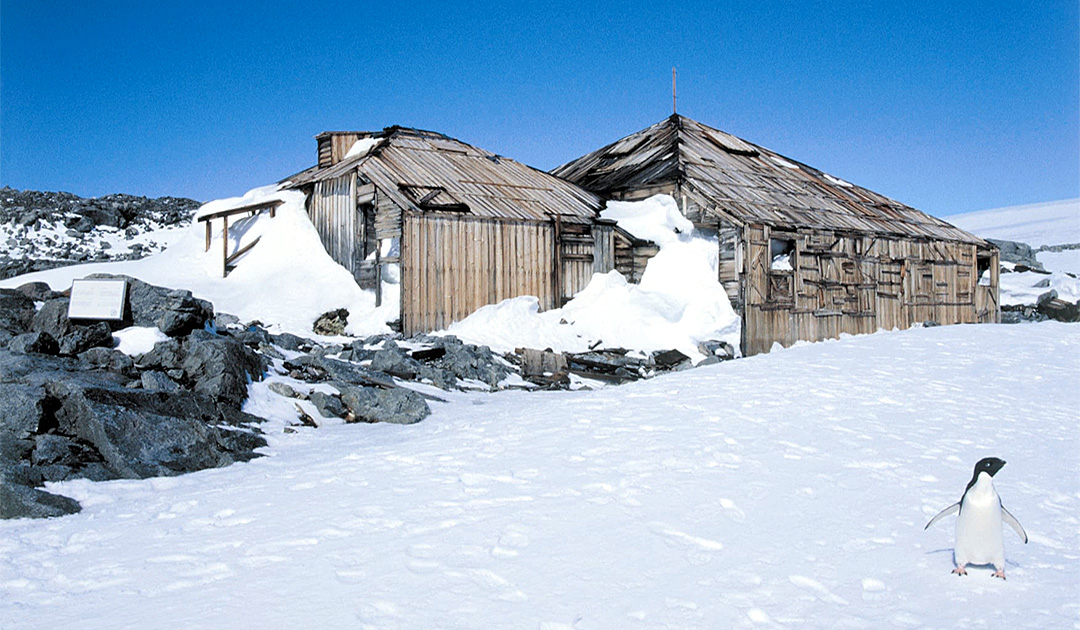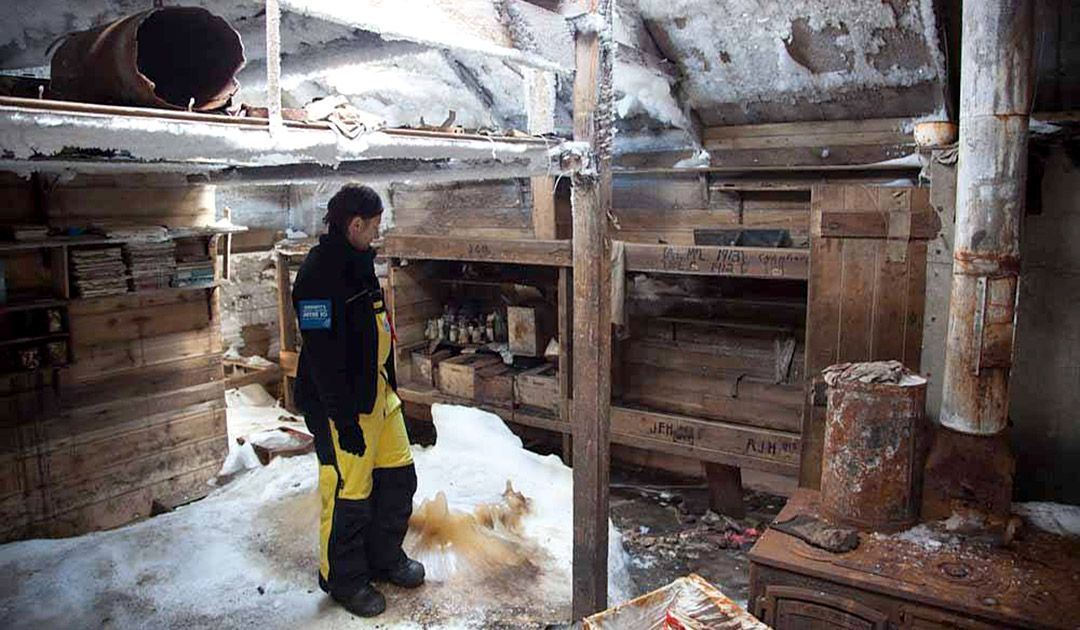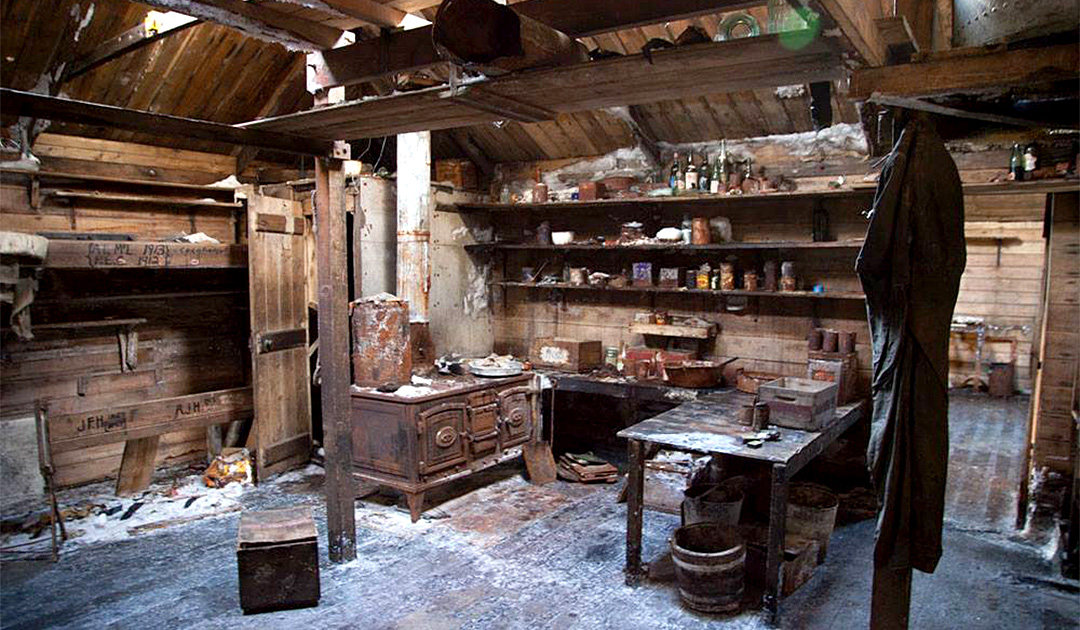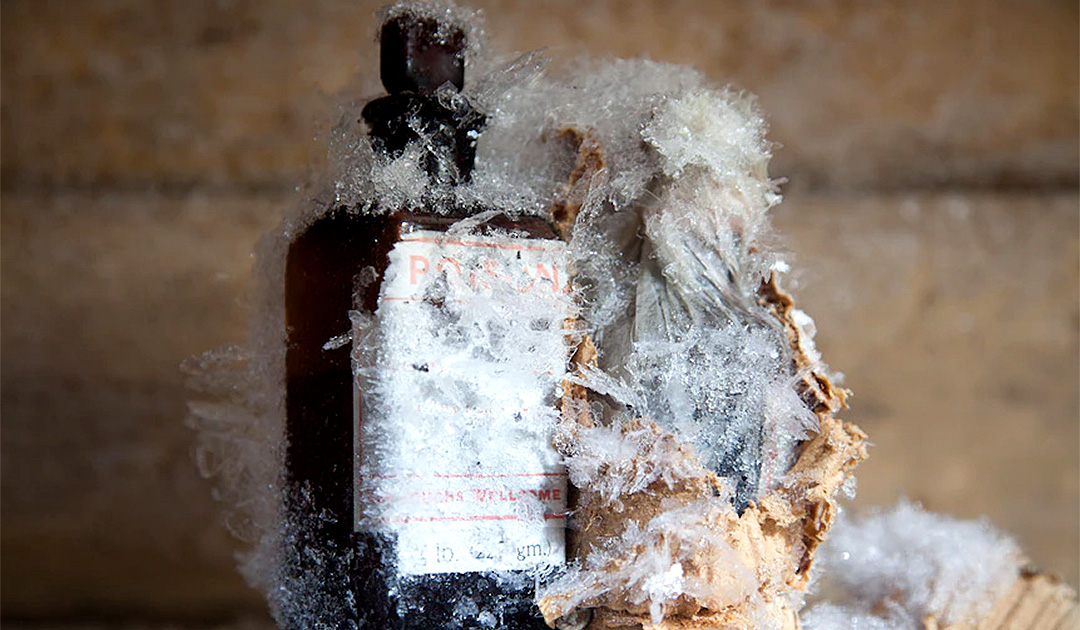
On December 3, 2021, six expedition members left for Antarctica aboard the French icebreaker L’Astrolabe. Destination is Commonwealth Bay to restore the remains of the historic Mawson Cabin during six weeks.
The heritage-listed huts were built at Cape Denison between 1911 and 1914 by the Antarctic expedition Douglas Mawson and his crew, and housed a group of about 32 men for a year when they missed being picked up by their supply ship “Aurora”.

Restoration under difficult conditions
The restorers sleep in a container or in tents and the toilet is a bucket. They spend their days in minus 20 degrees Celsius while battling gale force winds and polar conditions.
“The main task will be to do a little ‘health check’ of the Mawson’s Huts,” said Greg Carter, executive director of the Mawson’s Huts Foundation.
“The cabins were built for six months and are still there 110 years later. The team will do important work such as cutting out the ice inside the hut, caring for the timbers and preserving any artifacts we find there. New artifacts are always being found, just like the ones we know. We just check them out and do appropriate treatments to make sure they’re okay.“
Other tasks include setting up an automatic weather station and counting the penguins that live in colonies around the huts.

Reaching the Mawson Hut becomes a challenge
If the group manages to reach Cape Denison, work will resume on the cabins for the first time since 2015.
“There was a big iceberg blocking the entrance to Commonwealth Bay, but it’s broken apart a bit now,” Greg Carter said of the recent trip.
Fast ice”, i.e. ice that is connected to the continent, could also pose an additional challenge for the expedition members.
“Right now the Fast Ice extends about 23 kilometres to the point we can reach by boat, so they will probably have to be brought to the ‘site’ by helicopter,” Greg Carter commented on the situation today.

Four of the expedition members have been to Antarctica several times before – including Mercury newspaper reporter David Killick , who will act as base camp manager and take responsibility for cooking for the crew.
Joining us for the first time are conservators Karina Acton and Eoin O’Suilleabhain.
“I’m really excited and definitely a little nervous. I didn’t think I would ever go to Antarctica in my life,” Karina Acton said. “I’ve worked on a few projects in Dubai in the desert and professionally I travel a lot, but I don’t think I’ve ever been so isolated in one place. I first started planning this expedition in March, but only received confirmation of participation last week.”

“Our entry permits for Tasmania came last Thursday. We’ve been planning for most of this year, but no certainty until a few days ago. We’re on the ice for six weeks and back and forth for one week, so it’s going to be eight weeks out of our daily routine,” Karina Acton continued.
The trip means expedition members will spend Christmas and New Year’s Eve without their families – but plans have been made for their own Antarctic celebrations.
“We have a special Christmas dinner planned and have a day off for Christmas – a real white Christmas,” Karina Acton said.

The team can benefit from the 24-hour daylight of Antarctica, but will face unpredictable weather conditions.
“On previous trips we’ve had winds of over 100 kilometres per hour, snowstorms that lasted for days and temperatures as low as minus 20 degrees,” said expedition leader Marty Passingham.
“It can be a challenging place to live, but work is an essential part of building survival.”
The huts do not reach many visitors, but their place in the history of Antarctica is worth the effort to carry out the restorations.
“Mawson was very special in that his expedition to Antarctica was the first truly scientific voyage to Antarctica,” Greg Cartet said.
“A lot of the other guys at the time, Shackleton and Scott and Amundsen, were all trying to be the first at the South Pole, it was all about glory hunting.
“Mawson was a scientist, he was a geologist, and a lot of the weather records he recorded there are still used in climate modeling today. So it’s really relevant to what he was doing 110 years ago.”
Website: www.mawsons-huts.org.au/





